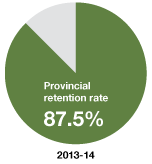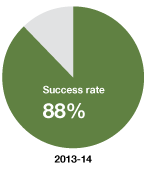ONTARIO
Dual Credits
PURPOSE: To enable students to build on their strengths and interests in school and get a head start on their postsecondary education and training.
MINISTRY
Ministry of Education, Government of Ontario
DESCRIPTION
The Dual Credit program was introduced in Ontario schools in 2005 as part of the Ministry of Education’s Student Success Strategy.
Dual credit programs are intended to assist secondary school students in completing their Ontario Secondary School Diploma and making a successful transition to college and/or apprenticeship programs. The primary focus is on students who face significant challenges in completing the requirements for graduation but have the potential to succeed. This group includes disengaged and underachieving students who have the potential to succeed but are at risk of not graduating, and students who left school before graduating. Students in the Specialist High Skills Major programs and students in the Ontario Youth Apprenticeship Program also participate in dual credit programs.
Dual Credit courses count twice: once towards a postsecondary certification and once towards a secondary school diploma. They fall into two broad categories:
• College-delivered dual credit courses in which students take a college course or Level 1 apprenticeship program. The credit is recorded on the college record using college course codes, and also on the Ontario Student Transcript, using a special dual credit course code assigned by the Ministry of Education. Students may count a maximum of four dual credits as optional credits towards the diploma; and,
• Team-taught dual credit courses in which closely matched college or apprenticeship content and secondary school curriculum content is taught by both a college professor/instructor and a secondary school teacher.
It is a requirement of all dual credit courses that a secondary school teacher be assigned to provide a variety of supports to students.
Today, all 70 school boards that have secondary schools and all 24 Ontario colleges of applied arts and technology are involved in providing secondary school students with dual credit learning opportunities.
RESULTS
Approximately 22,000 students are participating in dual credits in 2014–15. Funding for this program (approximately $35 million annually) flows to school boards (31 percent) and colleges (69 percent).
Achievement data from 2013–14 indicated a provincial retention rate (students who finished compared to those who started) of 87.5 percent and a success rate (percentage of students who successfully completed their dual credit) of 88 percent.
FURTHER INFORMATION
Student Success / Learning to 18











